Most people visit the National Museum of Marine Biology and Aquarium for its cute penguins, belugas and other critters, but history aficionados will appreciate the fact that an invading Japanese army camped in its parking lot in 1874.
The stele marking the event was destroyed, rebuilt, defaced and restored over the decades due to changes in Taiwan’s political climate, and the latest text was inscribed in 2000 after the aquarium opened. It’s one of the many sites scattered throughout the Hengchun Peninsula (恆春) related to the Mudan Incident (牡丹社事件), a punitive expedition by the Japanese in response to Paiwan warriors killing 54 shipwrecked sailors from the Kingdom of Ryukyu in 1871.
The ruling Qing Dynasty was not only slow to react to the event, they even paid for the Japanese losses. The Japanese used the incident as a pretext to annex Ryukyu, while the Qing finally realized Taiwan’s importance and started proactively governing and defending it.
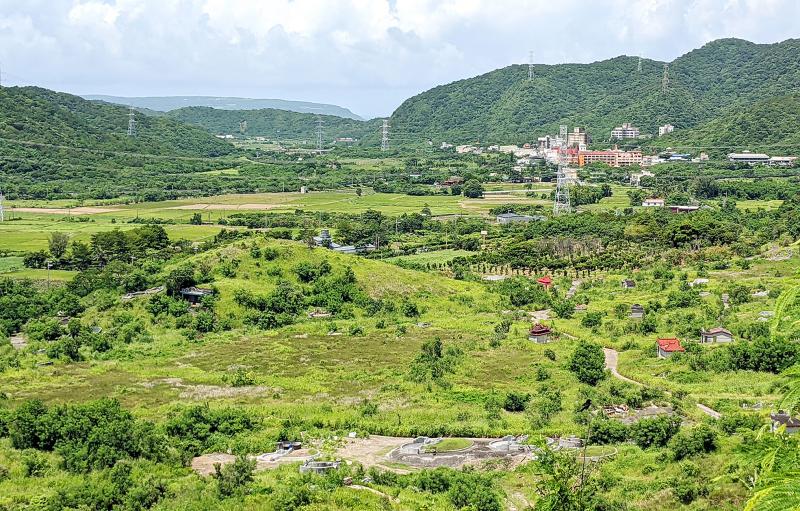
Photo: Han Cheung, Taipei Times
Last weekend, I traveled to the peninsula to interview the descendants of these Paiwan about their decades-long effort to write their story into the historical record and overturn their portrayal as bloodthirsty headhunters. There was also much to see and do along the way, and one can make an enjoyable trip out of it while tracing the footsteps of an unfortunate event.
RIDING AROUND TOWN
We started our journey in Pingtung City, a laid-back city 30 minutes from Kaohsiung. The P-Bike rental system makes it very convenient to get around, and though the vehicles are somewhat flimsy compared to the Youbike, they do the job.
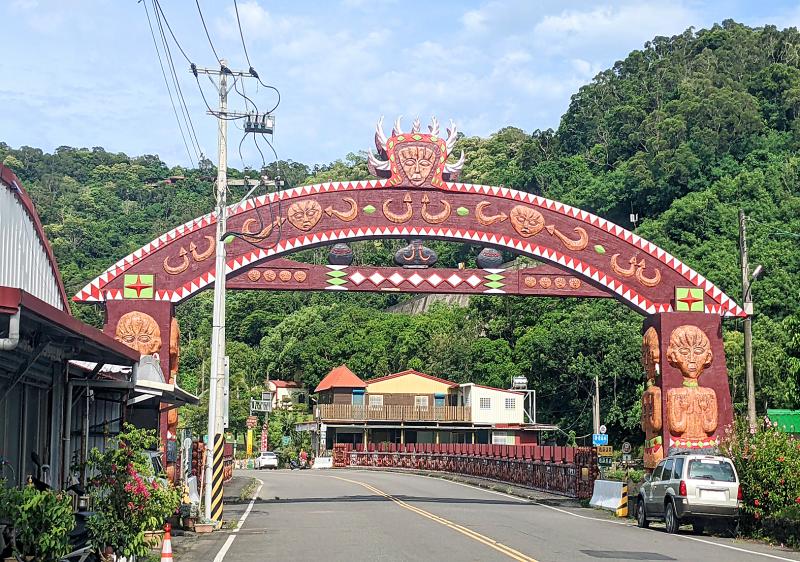
Photo: Han Cheung, Taipei Times
There are currently two exhibitions in town about the Mudan Incident: the “Listening to Mudan: Formosa Incident of 1874” (聆聽牡丹的聲音) audiovisual display at the Pingtung Performing Arts Center, and a show on a new comic book at the nearly 100-year-old Pingtung Martial Arts Hall.
“Listening to Mudan” is fully bilingual in English and Chinese with significant Paiwan-language content, and is well-worth visiting. If you don’t read Chinese, still check out the comic exhibition for the beautifully restored building. Built in 1930 for police training, it was used by the military after World War II until 2015.
To wind down, head over to Victory Star VIP Zone (勝利星村), an expansive cultural park with stylish restaurants, old-fashioned shops, bars and exhibition spaces occupying two well-preserved former Japanese-style military dependent villages. Countless cats roam the grounds, and many buildings and walls are adorned with whimsical murals of anthropomorphic felines.

Photo: Han Cheung, Taipei Times
Other historic structures in the city have been converted into hip spaces, such as the European-themed Craftsman District (職人町) and the 1936 Tobacco Culture Base (屏菸1936文化基地), which is across from the street from the performing arts center.
We enjoyed amped-up versions of traditional danbing (蛋餅, egg pancakes) at the atmospheric, retro-chic Wallet Brunch (約豊早午餐). Nearby Neipu Township (內埔) is famous for its cacao farms, chocolate boutiques and vibrant Hakka culture.
HENGCHUN’S NORTH COAST
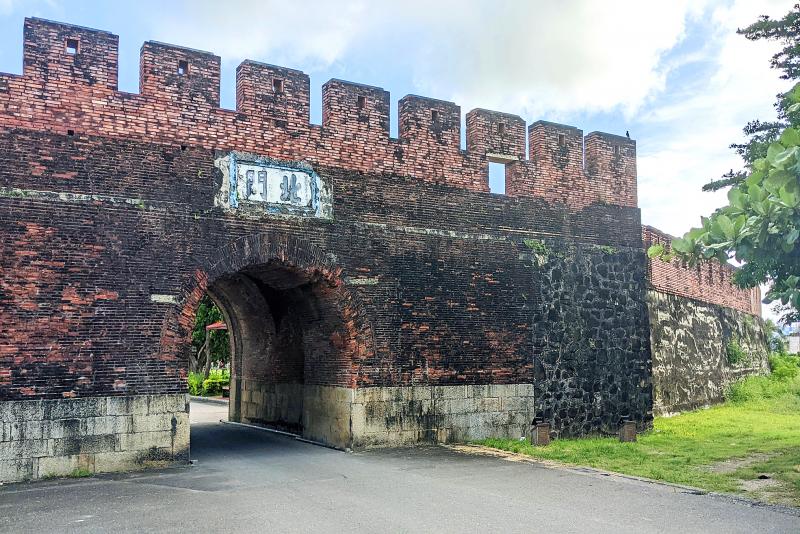
Photo: Han Cheung, Taipei Times
From Pingtung City, take a bus or drive two hours south to the Hengchun Peninsula. Our first stop here was the seaside town of Checheng (車城), which boasts the largest Earth God shrine in Taiwan, the 300-year-old Fuan Temple (福安宮). It’s said that the resident deity was given an imperial hat and robes by the Qianlong Emperor in the late 18th century.
A must-try specialty in town is a sweet mung bean soup (綠豆蒜), which comes in hot and cold versions. The viscous broth contains homemade caramelized maltose, and customers can add red beans, bean vermicelli and other goodies.
South of Checheng is the aquarium. I slept on a futon in the beluga hall several years ago on their “Night at the Aquarium” (夜宿海生館) program, which was quite a magical experience. The most popular spot to stay is the underwater tunnel where one can watch swarms of colorful marine creatures swim above them, and it needs to be booked well in advance (www.nmmba.gov.tw or call: (08) 882-5678, Chinese and English). Houwan (後灣) village and beach is in walking distance from the aquarium, and the nearby 72m-tall Turtle Mountain (龜山) offers easy access to panoramic views of the peninsula.
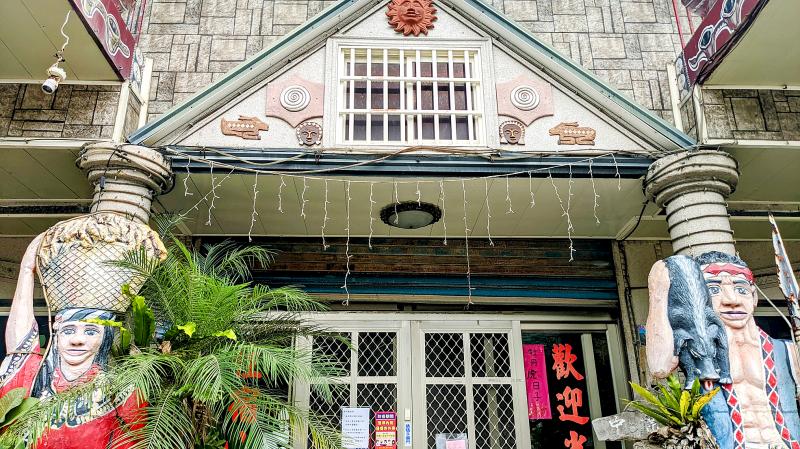
Photo: Han Cheung, Taipei Times
County Route 199 connects Checheng to the east coast via Mudan (Sinevaudjan) Township. Just a few minutes in, down a small path next to verdant rice paddies is the now-empty mass grave of the 54 Ryukyuans who were killed in the incident. Bottles of sake and other Japanese alcohol brought by people paying their respects are neatly placed at the well-kept site.
Further inland is Sichong River (四重溪), which was established as one of Taiwan’s four major hot spring towns during the Japanese colonial era. Accommodations abound, but of note is the Qing Quan Hot Springs Hotel (清泉日式溫泉館), where Emperor Hirohito’s brother Nobuhito spent part of his honeymoon.
PAIWAN COUNTRY
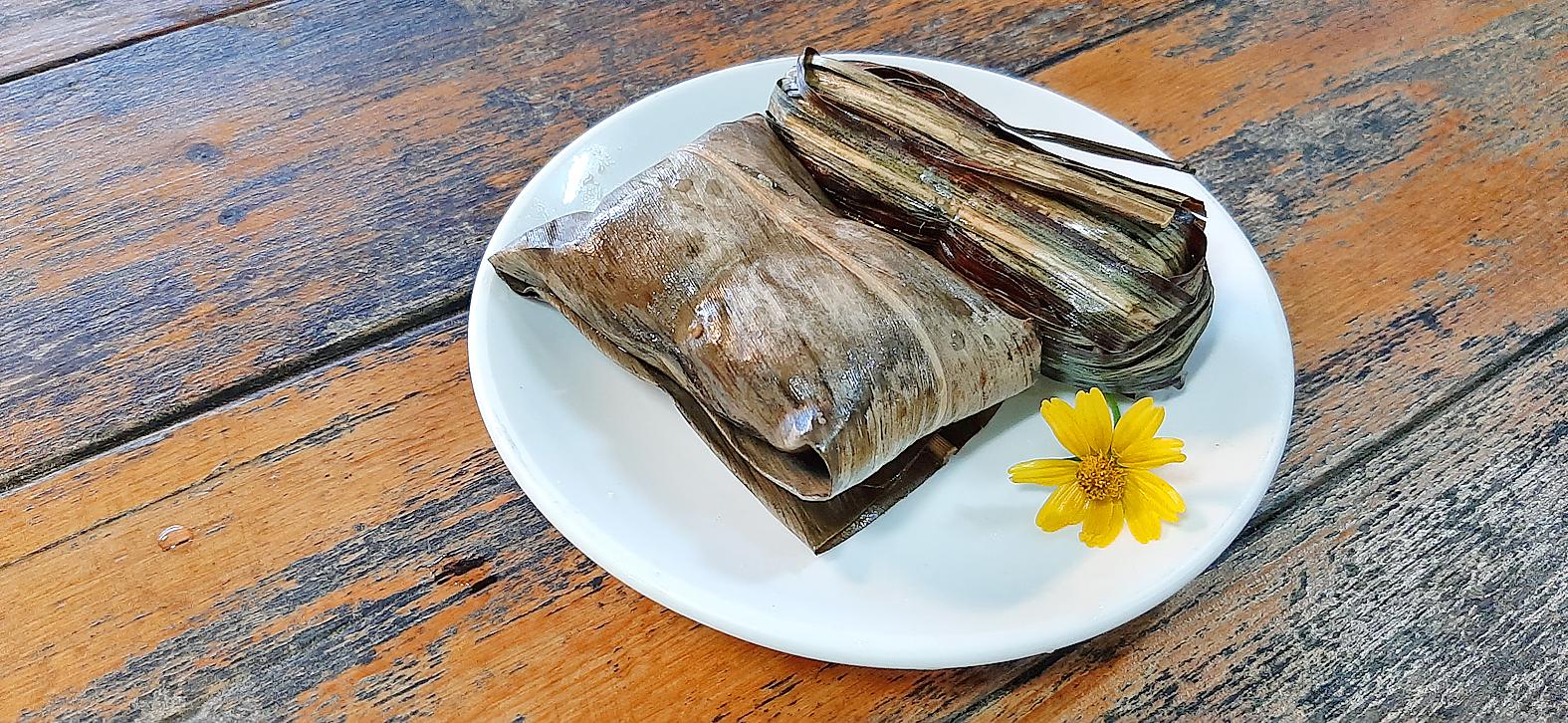
Photo: Han Cheung, Taipei Times
Further up the mountain is a footpath leading to a memorial stele erected by the Japanese government in 1936 to honor Jugo Saido, commander of the 1874 invasion. The stele’s text was changed in 1953 to celebrate the Chinese Nationalist Party’s (KMT) eight-year struggle against the invading Japanese during the Second Sino-Japanese War, and restored to the original in 2019 with a plaque next to it explaining its significance.
From the stele, one can see all the way to the geographic opening by the aquarium where the Japanese landed, and visualize the path they took along the river to attack the Paiwan community. A newly built roadside footpath connects this site to the Shihmen Historic Battlefield, where the two sides clashed, and the Mudan Incident Memorial Park. The Mudan Township Office tells me that when the Mudan Incident Memorial Hall next to the park is complete, there will be shuttle buses taking visitors back to their car after they reach one end.
Colorful murals along the road tell the full story of the incident, and there are faded Chinese-English-Japanese displays along an overgrown path atop the park leading to an observation point. The office says these will also be renewed in the near future.
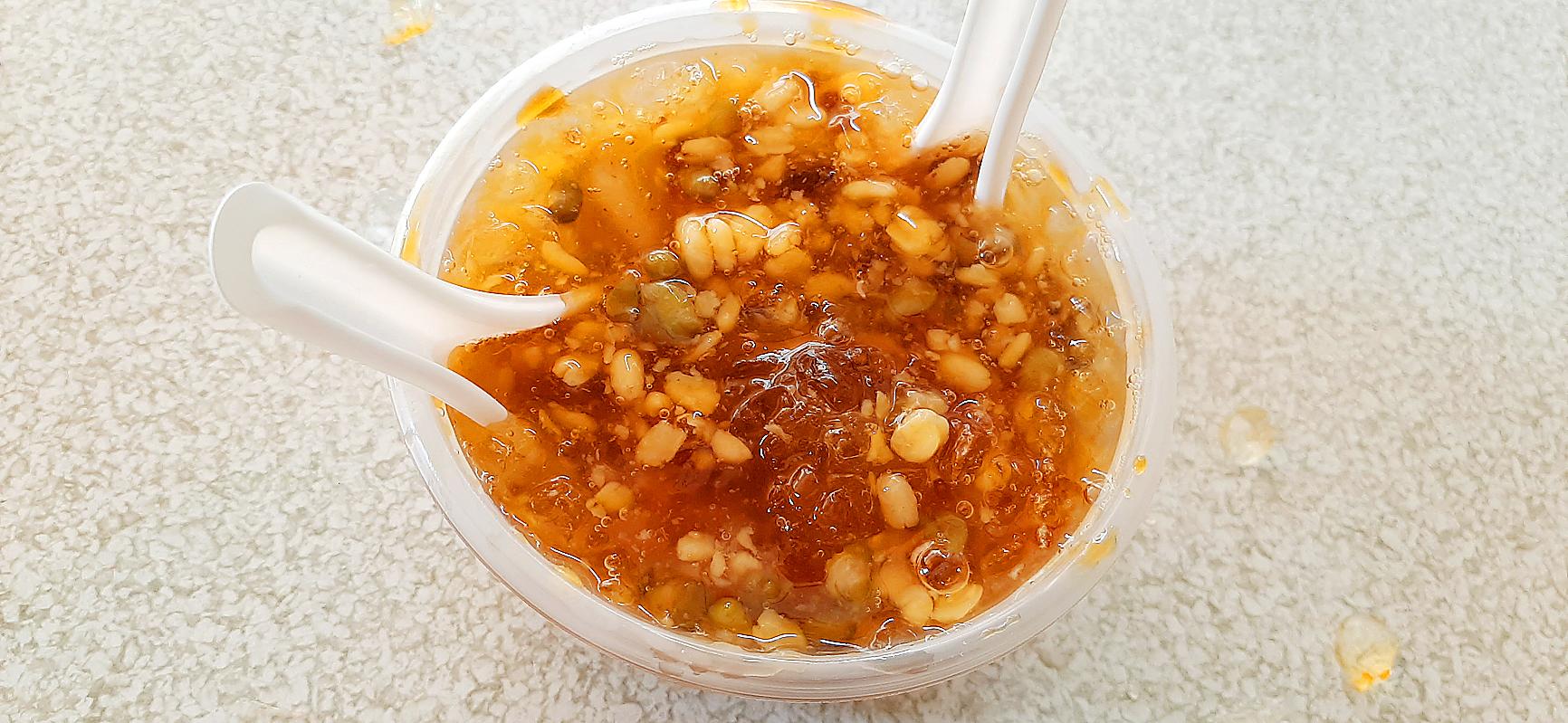
Photo: Han Cheung, Taipei Times
The first Paiwan settlement is Kapanan, commonly referred to as Shihmen (石門). Many eateries don’t allow indoor dining due to COVID-19, but we enjoyed a delicious Paiwan-style meal at Nanfang Buluo (南方部落) restaurant on an open terrace with splendid mountain views. We ate cinavu (glutinous rice with taro/millet and pork wrapped in leaves), magao (mountain pepper) fish and stir-fried bird’s nest fern with cordia dichotoma (破布子), with a generous pitcher of dragon fruit juice.
We stayed at Elder Gu’s Bed and Breakfast (古長老民宿), which is semi-closed due to the pandemic. Friendly and talkative owner Atinpon Gu (古英勇) offers tours of the surrounding mountains and sights, but he recommends that we return in October or November when the weather is cooler and hopefully the pandemic has subsided. Call ahead before you go: tel: (08) 883-1076. The current Mudan Incident Story Hall is next to the Mudan Reservoir, which is quite dry at the moment.
We only make it as far as the next village, Sinevaudjan or Mudan (牡丹), before turning back due to time constraints, but next time I want to continue on Route 199 to the east coast and check out the Alangyi Historic Trail.
Hengchun, the only town in Taiwan that retains all four of its original city gates, was built by the Qing to fortify the area in response to the Mudan Incident. It is just a 25-minute bus ride away from Kapanan, and makes an ideal place to just relax by the beach.
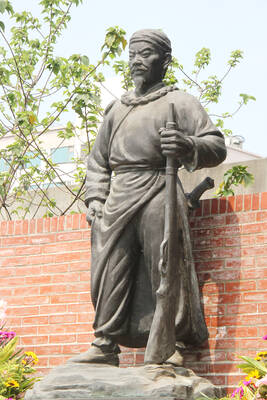
JUNE 30 to JULY 6 After being routed by the Japanese in the bloody battle of Baguashan (八卦山), Hsu Hsiang (徐驤) and a handful of surviving Hakka fighters sped toward Tainan. There, he would meet with Liu Yung-fu (劉永福), leader of the Black Flag Army who had assumed control of the resisting Republic of Formosa after its president and vice-president fled to China. Hsu, who had been fighting non-stop for over two months from Taoyuan to Changhua, was reportedly injured and exhausted. As the story goes, Liu advised that Hsu take shelter in China to recover and regroup, but Hsu steadfastly

Taiwan’s politics is mystifying to many foreign observers. Gosh, that is strange, considering just how logical and straightforward it all is. Let us take a step back and review. Thanks to the Chinese Nationalist Party (KMT) and the Taiwan People’s Party (TPP), starting this year people will once again have Christmas Day off work. In 2002, the Scrooges in the Democratic Progressive Party (DPP) said “bah, humbug” to that. The holiday is not actually Christmas, but rather Constitution Day, celebrating the enactment of the Constitution of the Republic of China (ROC) on December 25, 1947. The DPP and the then pan-blue dominated legislature
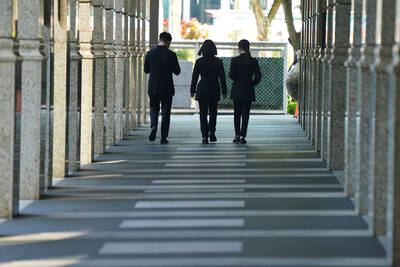
Focus Taiwan reported last week that government figures showed unemployment in Taiwan is at historic lows: “The local unemployment rate fell 0.02 percentage points from a month earlier to 3.30 percent in May, the lowest level for the month in 25 years.” Historical lows in joblessness occurred earlier this year as well. The context? Labor shortages. The National Development Council (NDC) expects that Taiwan will be short 400,000 workers by 2030, now just five years away. The depth of the labor crisis is masked by the hundreds of thousands of migrant workers which the economy absolutely depends on, and the

If you’ve lately been feeling that the “Jurassic Park” franchise has jumped an even more ancient creature — the shark — hold off any thoughts of extinction. Judging from the latest entry, there’s still life in this old dino series. Jurassic World Rebirth captures the awe and majesty of the overgrown lizards that’s been lacking for so many of the movies, which became just an endless cat-and-mouse in the dark between scared humans against T-Rexes or raptors. Jurassic World Rebirth lets in the daylight. Credit goes to screenwriter David Koepp, who penned the original Jurassic Park, and director Gareth Edwards, who knows